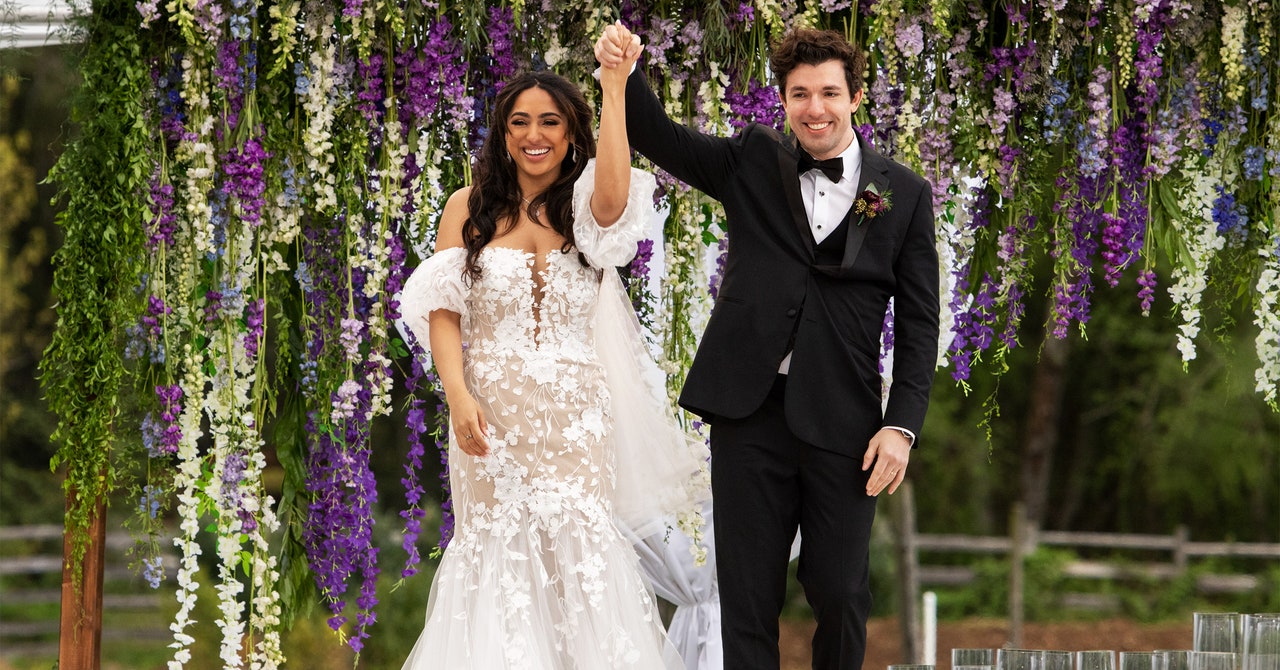
With the mistake of ‘Love is Blind’, Netflix makes a case for old-fashioned TV
Netflix’s (Love is Blind) Misstep and Its Impact on the Pop Culture Landscape in the Decay Between TV and Broadcast Networks
The company had promoted the show heavily for a few days, and had changed its website to reflect the show’s cast members.
Netflix’s attempt to offer a live “Love is Blind” reunion show hit a snag on Sunday, as the leading streaming service tries to incorporate live events into its menu, a process begun with the recent Chris Rock comedy special.
“This can’t be the same Netflix that keeps raising prices and trying to hold our personal passwords hostage while offering consistently less in quality and quantity, could it??” one user said.
Netflix has undergone a series of changes since last year. In April, the company announced it lost subscribers for the first time in a decade. Then, in October, it said it gained about 2.4 million subscribers in the third quarter of 2022, and announced it would roll out a $6.99 plan with ads and crack down on password sharing. It also laid off 450 people across two rounds of layoffs.
In a bit of irony, “Love is Blind,” the popular Netflix dating show, has inadvertently made streaming’s growing pains crystal clear, while reinforcing some of the advantages that linear and traditional TV networks still enjoy.
Still, for cable and broadcast channels trying to make the case for their continued relevance and viability, the argument might be as simple as pointing to something like Netflix’s “Love is Blind” misstep, and the fact that streaming services have developed a keen interest in providing a facsimile of what they’ve been doing all along.
Specifically, more streamers have come around to the notion of releasing episodes at weekly intervals versus binge drops allowing the audience to devour them all at once. The more traditional pattern has been seen as an asset for shows like “The Last of Us”, and “Succession” that build suspense and excitement. (Like CNN, HBO is a unit of Warner Bros. Discovery.)
As NPR critic Eric Deggans put it in a recent discussion of the pros and cons of the practice, staggering the release “spreads the impact of a show on the zeitgeist. When people start talking about it, it gets other peoples attention, and it kind of rolls its way through the pop culture landscape.
The executives leading those networks have largely been on the defensive as ratings decline and more consumers “cut the cord” for cable or satellite in favour of streaming services.
Netflix disrupted TV—which had a pretty good thing going when it came to live broadcasts—only to recently bring it back, introducing its subscribers to a live Chris Rock stand-up special in March. It’s widely believed that the move to live content is part of a strategy to differentiate itself in a competitive field, particularly since the network has taken unpopular steps to build revenue and have vowed to cut back on password sharing. But live programming on streaming is more difficult than in broadcasting, and Netflix is far from the first streamer to fall victim to the technical hurdles—especially when it comes to in-demand content.
“You can say it’s so popular that it’s failure by success,” says John Kendall, a media delivery analyst at consulting firm Omdia. The network needs to stand out by having highly anticipated content like a hit reunion show. But the snafu may have been caused by too many people trying to access the program. The problem will not be the last, despite the fact thatNetflix just encountered it.
Netflix in particular faces challenges here, Kendall says, because it has only one way to distribute its content: through a Netflix app on a TV, computer, phone, or tablet. It diversifies the way the channel distributes its content because they have both people who use their cable subscriptions as well as those who watch via apps.

